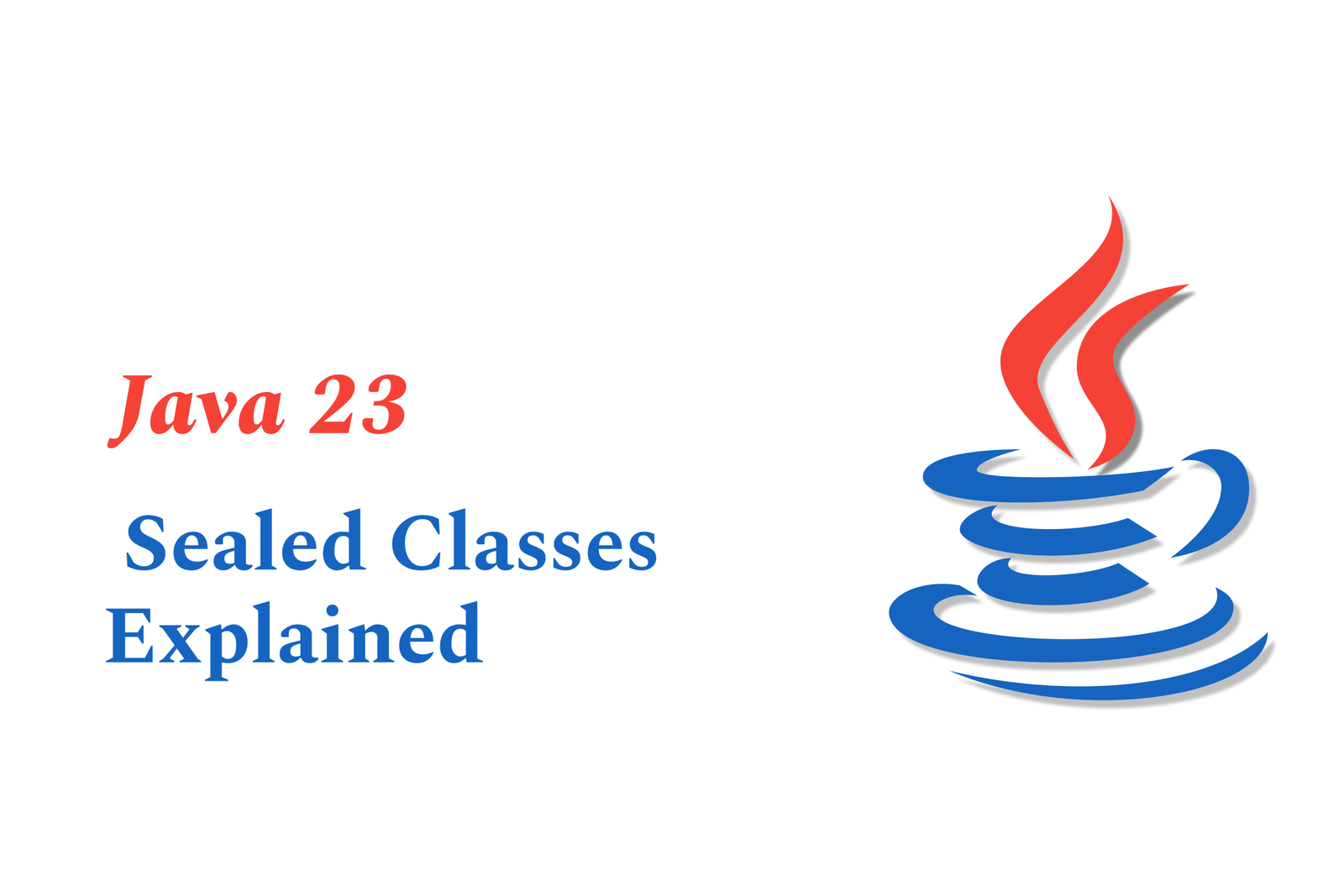Java 23 sealed classes explained
Java 23 sealed classes restrict which classes can extend or implement them, enhancing type safety and maintainability by explicitly defining a fixed set of permitted subclasses. This feature helps create controlled, secure inheritance hierarchies for better API design and exhaustive checks.
Java 23 Sealed Classes Explained
1 ) Introduction to Sealed Classes
Sealed classes and interfaces in Java restrict which other classes or interfaces may extend or implement them. This feature, introduced to provide controlled inheritance, ensures that a predefined and limited set of subclasses can extend a sealed class, enhancing code safety and maintainability.
2 ) Purpose and Use Cases
Code Reuse with Control: Inheritance allows reuse of code, but unlimited subclassing can cause issues in domain modeling.
Modeling Finite Domain Entities: For example, a graphics library defining geometric shapes can seal the `Shape` class to restrict extensions to known primitives only (like Circle, Square, Rectangle).
Closed API Design: Prevents clients from arbitrarily extending classes, ensuring the API behaves predictably.
3 ) Declaring Sealed Classes
Use the `sealed` modifier in the class declaration.
Follow it with the `permits` clause listing all allowed subclasses.
Example:
java
public sealed class Shape permits Circle, Square, Rectangle { }
Permitted subclasses must be declared in the same module or package.
4 ) Types of Permitted Subclasses
Final Classes: Cannot be further extended.
Non sealed Classes: Allowed to be extended by other arbitrary classes (breaking the seal if needed).
Sealed Classes: Can continue having a restricted set of subclasses with their own permits clause.
Example subclasses:
java
public final class Circle extends Shape { … }
public non sealed class Square extends Shape { … }
public sealed class Rectangle extends Shape permits FilledRectangle { … }
5 ) Permitted Subclasses Constraints
Must be accessible at compile time to the sealed class.
Must be explicitly declared through `permits` or be within the same file (where permits can be omitted).
Subclasses must respect visibility and inheritance constraints to maintain strong encapsulation.
6 ) Sealed Classes vs Sealed Interfaces
Both restrict which classes or interfaces may extend or implement them.
All direct subclasses or implementers are known at compile time, which facilitates exhaustive checks in control flow statements (e.g., `when` expressions in modern Java variants).
7 ) Constructors in Sealed Classes
Sealed classes are inherently abstract and cannot be instantiated on their own.
Constructors are used to initialize subclasses.
Constructor visibility can be `protected` (default) or `private` for tighter control.
Example:
java
sealed class Error(val message: String) {
class NetworkError : Error("Network failure")
class DatabaseError : Error("Database cannot be reached")
}
Enums may be used alongside sealed classes for enhanced state representation.
8 ) Benefits of Sealed Classes
Enhanced type safety: Covers all known subclasses exhaustively in switch or conditional expressions.
Better maintainability: Limiting subclassing prevents unintentional or harmful extensions.
Improved API robustness: Guarantees that external clients cannot extend classes beyond the defined scope.
9 ) Summary
Java 23’s sealed classes are a powerful feature for managing inheritance hierarchies by explicitly specifying permitted subclasses. This allows developers to design safer, more predictable, and maintainable class structures suited for domain modeling, state representation, and closed APIs.
https://justacademy.in/news-detail/flutter-test-lab-new-features
https://justacademy.in/news-detail/android-security-best-practices-updates
https://justacademy.in/news-detail/how-react-native-is-powering-the-next-generation-of-desktop-apps
https://justacademy.in/news-detail/java-in-cloud-security:-best-practices
https://justacademy.in/news-detail/ios-developer-jobs-on-the-rise-in-india
Related Posts
In 2025, top Angular libraries offer modern, feature-rich components and tools for building dynamic web apps. From powerful data grids to low-code platforms like UI Bakery, these libraries enhance development speed, UI design, and scalability, making them essential for Angular developers.
Migrating from AngularJS to Angular 17 involves gradually upgrading your app by running both frameworks together using tools like ngUpgrade, rewriting components in TypeScript, and adopting Angular’s modern architecture to enhance performance, maintainability, and long-term support.
Angular state management tools help organize and handle app data efficiently, improving scalability and maintainability. Popular options include NgRx for robust, RxJS-based patterns, and newer Signal Store solutions that offer simpler, reactive approaches integrated tightly with Angular’s latest features.
RxJS in Angular empowers developers to manage asynchronous data streams with powerful operators like `forkJoin`, `combineLatest`, and `zip`. Mastering these key operators in 2025 is essential for building efficient, reactive applications that handle complex event sequences seamlessly.
Angular performance optimization in 2025 focuses on improving app speed and responsiveness by using techniques like OnPush change detection, lazy loading, efficient data caching, and AOT compilation. These practices reduce load times, enhance user experience, and ensure scalable, fast Angular applications.
In 2025, Angular remains preferred for large-scale, enterprise apps with its robust, all-in-one framework, while Vue attracts developers seeking simplicity and fast development for smaller projects. Both frameworks excel, with choice driven by project needs and team expertise.
Angular Signals are a new reactive primitive in Angular 16 that enable fine-grained, efficient change detection by automatically tracking dependencies and updating only affected parts of the UI. They simplify state management and boost app performance, revolutionizing Angular's reactivity model.
Angular interview questions to prepare in 2025 focus on core concepts like components, directives, data binding, routing, and dependency injection, along with TypeScript mastery and latest Angular features to ensure strong practical knowledge for building scalable, efficient web applications.
AngularJS reached its official end of support in January 2022, meaning no further updates or security patches. To ensure app security and performance, developers should consider migrating to modern Angular versions or seek third-party long-term support options if immediate migration isn’t possible.
The Angular Roadmap 2025 highlights upcoming features focused on improving developer experience and performance, including zoneless Angular, Signals integration, enhanced Forms, async data handling, improved HMR, and expanded Angular Material/CDK enhancements, driving modern, efficient web app development.










